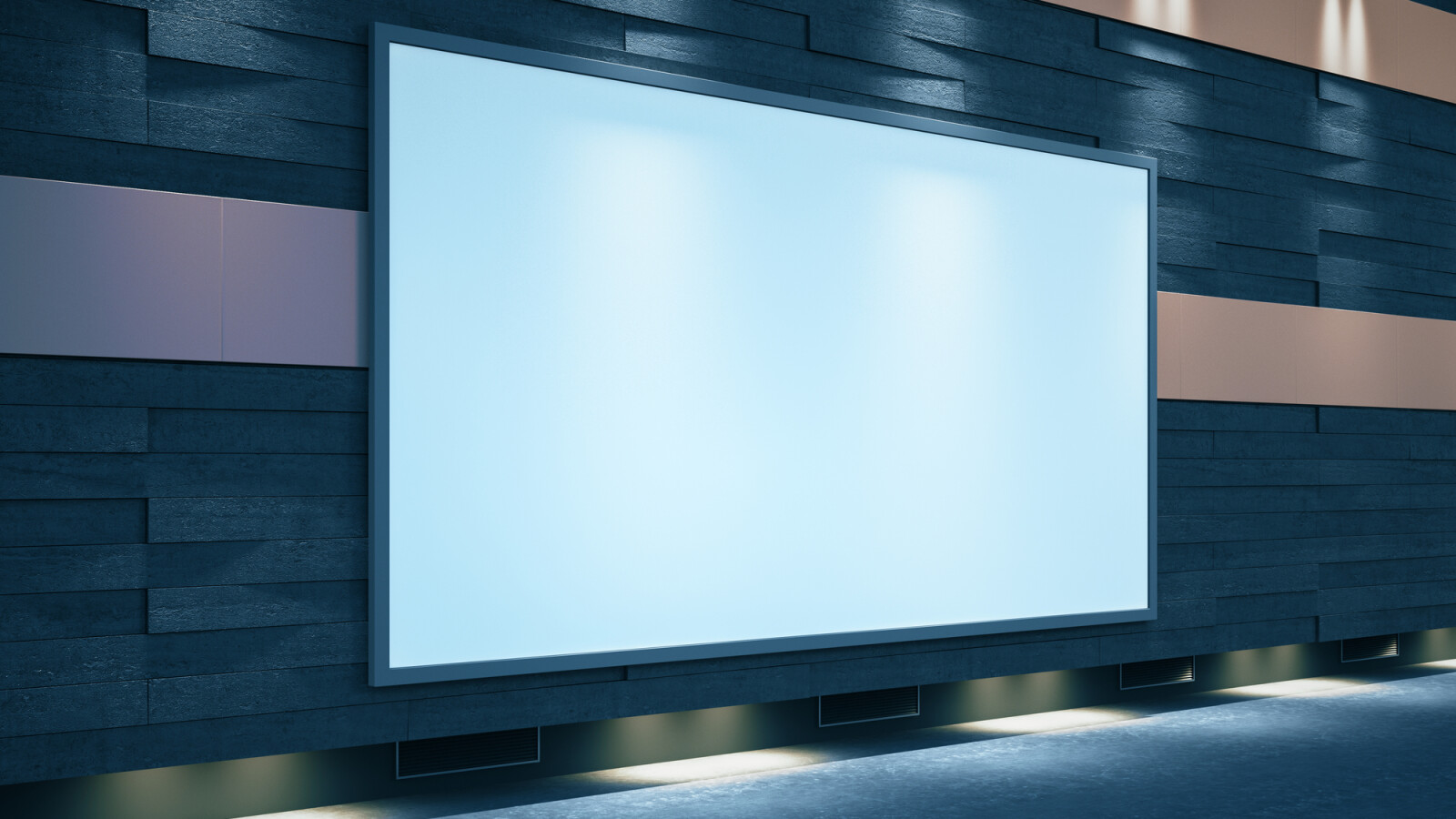With a screen, the images from your projector at home look even better. We show which canvases are worthwhile and what you have to consider when buying.
Series and films are optimally displayed on your projector on a suitable projection surface. (Source: peshkov/depositphotos.com)
If you prefer the projector to the television in the home cinema, you should also think about buying a screen. Because your projector achieves a significantly better picture with it, which is reflected in the colors and the picture brightness, for example. A screen is therefore a must-have for all film lovers.
Tripod or extendable screens
Manual roller screen
Electric screen
tension canvases
frame canvas
Masking of canvases
high contrast canvas
Choosing the right one can be difficult as there are so many types. The price range can vary between 90 and 1,000 euros – so there are serious differences. In addition, not all projectors are suitable for projection on a screen. There are some restrictions, especially for models under 1,000 euros. We give you an overview of the individual screen types as well as their advantages and disadvantages.
Tripod or extendable screens Tripod or pull-out screens are only suitable for home cinema to a limited extent. (Source: Sepia100 /depositphotos.com)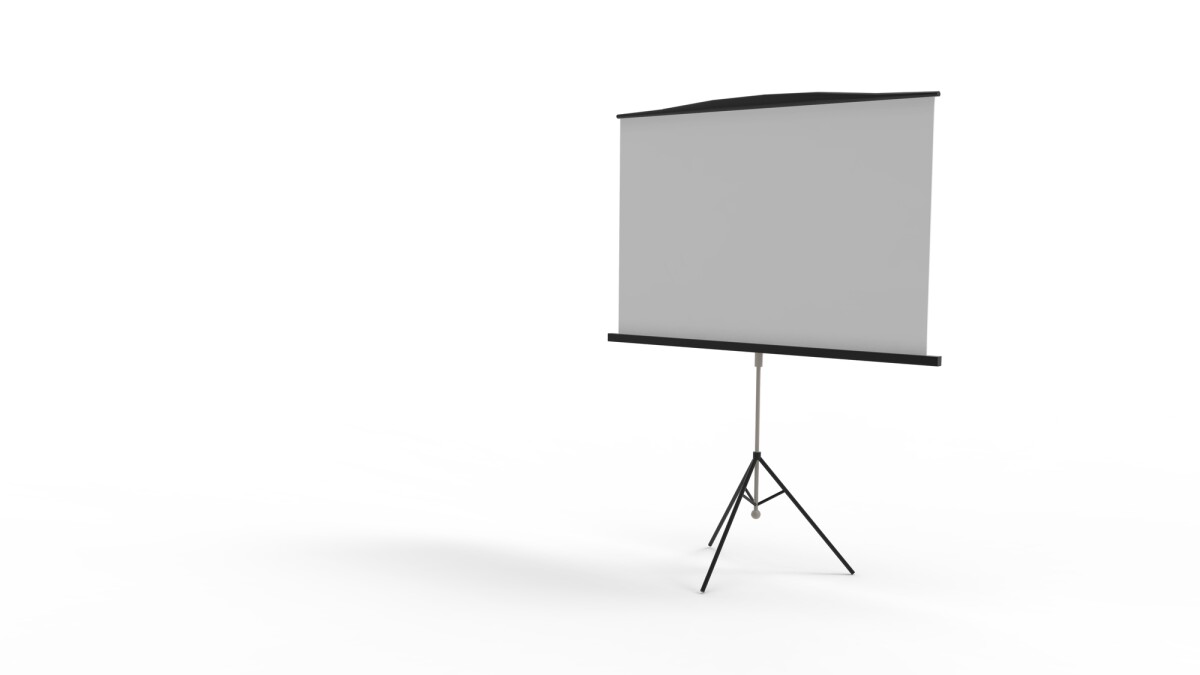
Tripod or pull-out screens are intended for mobile use and can be set up and taken down quickly. Due to their mobility, the maximum image size is severely limited and the canvases are often prone to ripples in the cloth. In most cases, you will look in vain for masking in the form of black bars at the edge. As a result, the contrast is not quite as strong. Since these types of screens often consist of thin cloth, the brightness of the picture also decreases.
Portable tripod screens are only suitable for a home cinema to a limited extent. However, for applications in which the image quality is in the background, such screens show their advantages. For example, at a movie night in the garden, camping or on the balcony, just the right thing for spontaneous movie nights on the go and in a small group
In addition to the mobile tripod screens, there are also floor screens. With these screens, the cloth is simply pulled up from the ground and then set up by a pole construction. Canvas prices increase with the width of the picture. A mobile entry-level screen starts at around 150 euros.
Manual roller screen
Rollo screens are attached to the wall as a metal box and the screen cloth can be extended and retracted as desired. They can therefore be integrated very unobtrusively into the living room and are a very inexpensive solution that is completely sufficient for home cinema use.
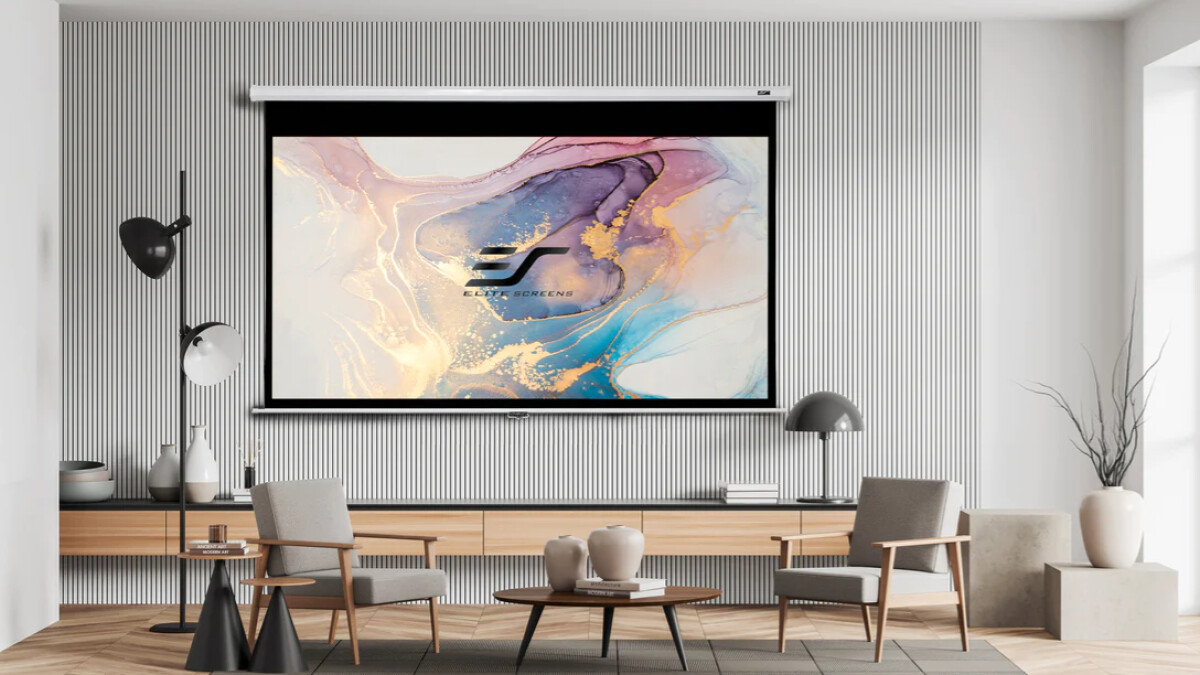
Thanks to a spring mechanism, roller screens can be easily retracted and extended. (Source: ELITE SCREENS / Screenshot: Netzwelt)
For those who don’t find it annoying to pull out the screen manually and can’t accept the fabric not being perfectly flat, a roll-up screen is the perfect introduction to the world of home cinema. Depending on the picture format, roll-up screens start at around 90 euros.
Electric screen
The electric screen is a luxury version of the roller screen. The screen can be comfortably operated from the couch. There is also the possibility to extend the screen automatically. For this it needs an external trigger signal.
A comparison of ultra-short-throw projectors: this is something to consider when buying
NETZWELT may receive a commission from the retailer for links on this site. More info.
The roller box for an electric screen can also be attached to the ceiling and wall and can therefore be perfectly integrated into the living room. You can enter the world of motorized screens from 300 euros.
tension canvases
A tension screen is a special category of electric screens. With these, the cloth is equipped with a Clamping device set to tension. This prevents waves in the screen and you can concentrate on the projected content undisturbed.
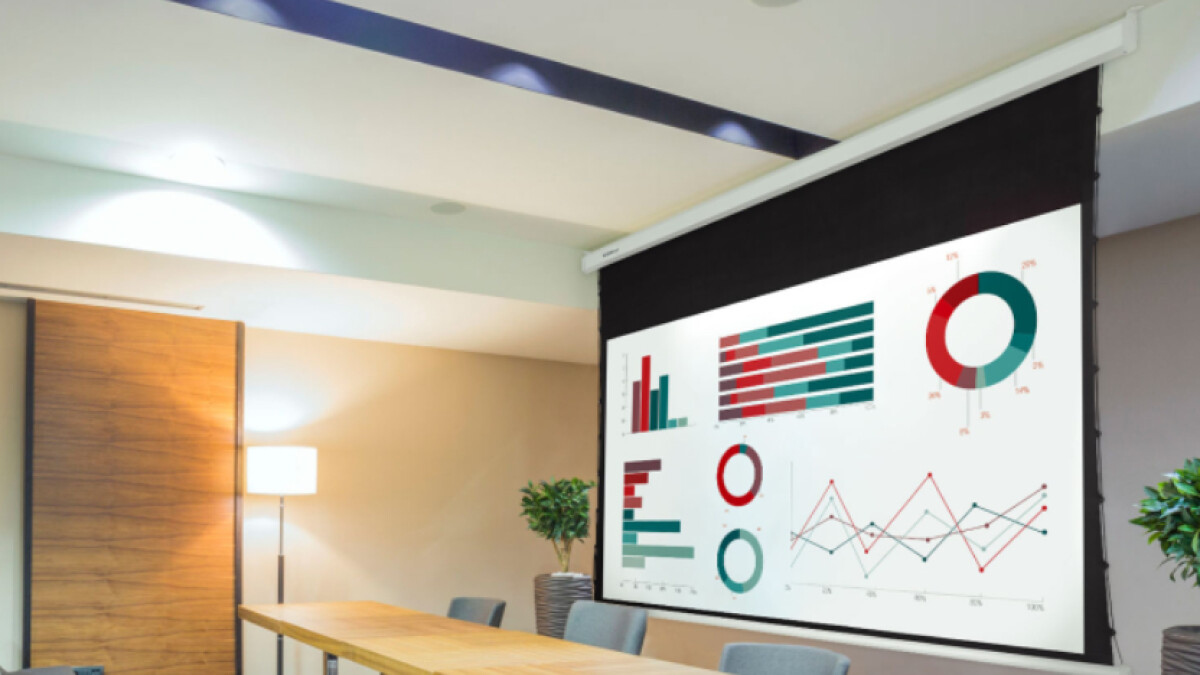
The electric tension screen must be fixed to the ceiling or to a wall with a tensioning device. (Source: ESMART / Screenshot: Netzwelt)
Due to the very good flatness of such screens, they are the perfect combination of living room-friendly and high-quality picture. For a beginner tension screen you have to pay around 260 euros.
frame canvas
Frame canvases are cloths that are stretched like on a picture frame. The resulting screen is optimal in every respect and an uncompromising solution for your home cinema. The flatness of these screens is extremely good and a black border around the picture absorbs stray light. This makes for a crisper picture. Frame screens offer a wide range of fabrics.
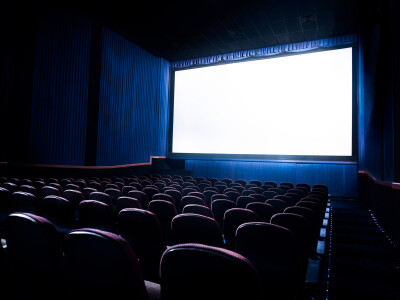
Frame screens are used in cinemas, among other places. (Source: fergregory/depositphotos.com)
Both the gain factor (how strongly the projected light is bundled on a projection screen) and the shade of gray of the fabric can be chosen almost freely. For these reasons, frame screens are used in cinemas and other professional applications. Frame screens start at 500 euros.
Masking of canvases
A black frame around a screen affects the perceived contrast enormously. The subjective perception of the eyes is drastically increased by the light-absorbing frame around the picture. From a purely metrological point of view, the contrast value of the image is still the same. The stray light in the room is absorbed by the black frame and the eye now has to adapt to less ambient brightness. As a result, your eye perceives a larger contrast range.
So-called multi-format screens can adjust their black frame depending on the picture format. So you can watch 21:9 as well as 16:9 and various other film formats fully masked. Multi-format screens are available in both electric and manual versions. Manual multi-format screens start at 1,000 euros.
high contrast canvas
High contrast screens have become increasingly popular in recent years. They make it possible to see a decently bright image even in brighter surroundings. Due to the gray color of the fabric, stray light in the room and light falling from the side are reflected less than with a white screen. This allows better black levels to be achieved.
A normal, only gray screen ensures that less light is reflected from the projector and makes the picture generally darker. Thus, the gain in contrast is nullified again. With high-contrast screens, a cloth with an increased gain factor is therefore used in addition to the gray cloth. This bundles vertically incident light and reflects it back in the direction of the projector.
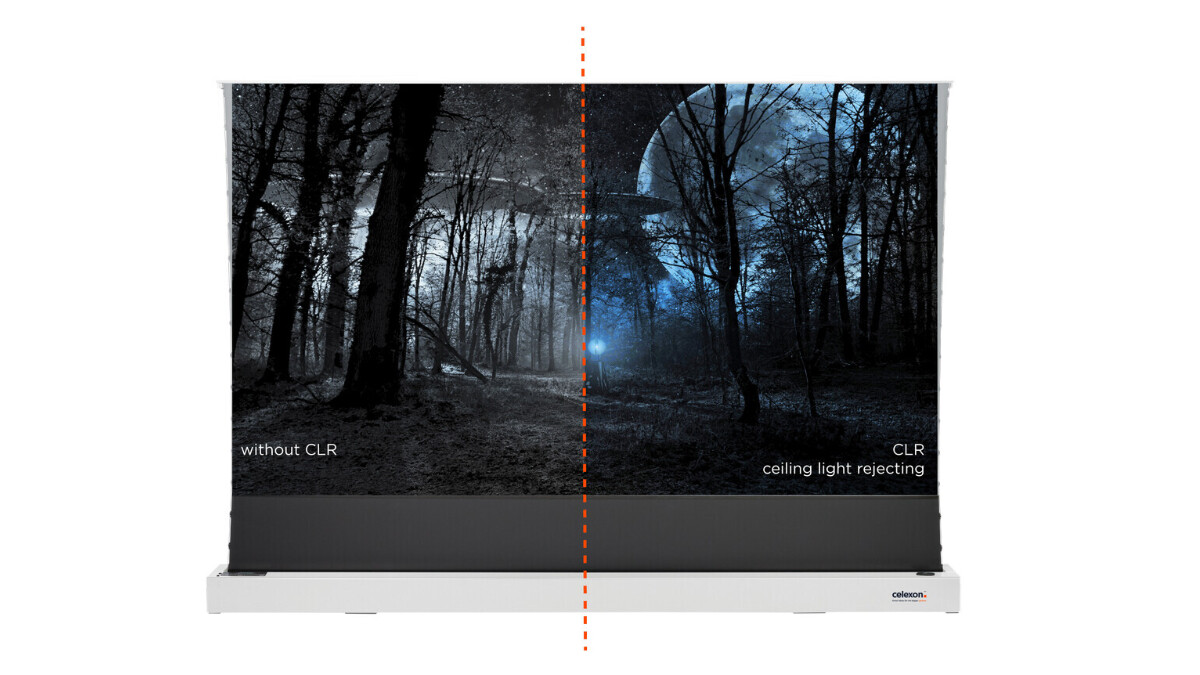
Due to their special fabric structure, high-contrast screens are particularly suitable for resolutions from Full HD to 4K and 8K. (Source: celexon / Screenshot: Netzwelt)
Stray light that falls from the side is thus absorbed and an image with good contrast values is created even in rooms with light sources. We particularly recommend high-contrast screens for home cinemas that cannot be completely darkened or in living rooms with light sources and many white and reflective surfaces.
High contrast wipes can be applied to any type of canvas. In most cases, however, these are frame or electric roller screens. In terms of price, high-contrast screens start at 900 euros and are therefore quite expensive. You have to pay a lot more for tension high-contrast screens or maskable solutions.
Is a canvas too expensive for you? Then you can simply point your projector at a wall. However, there are a few things to consider here. We’ll show you how to find the best wall for your projector.
Don’t miss anything with the NETWORK-Newsletter
Every Friday: The most informative and entertaining summary from the world of technology!
